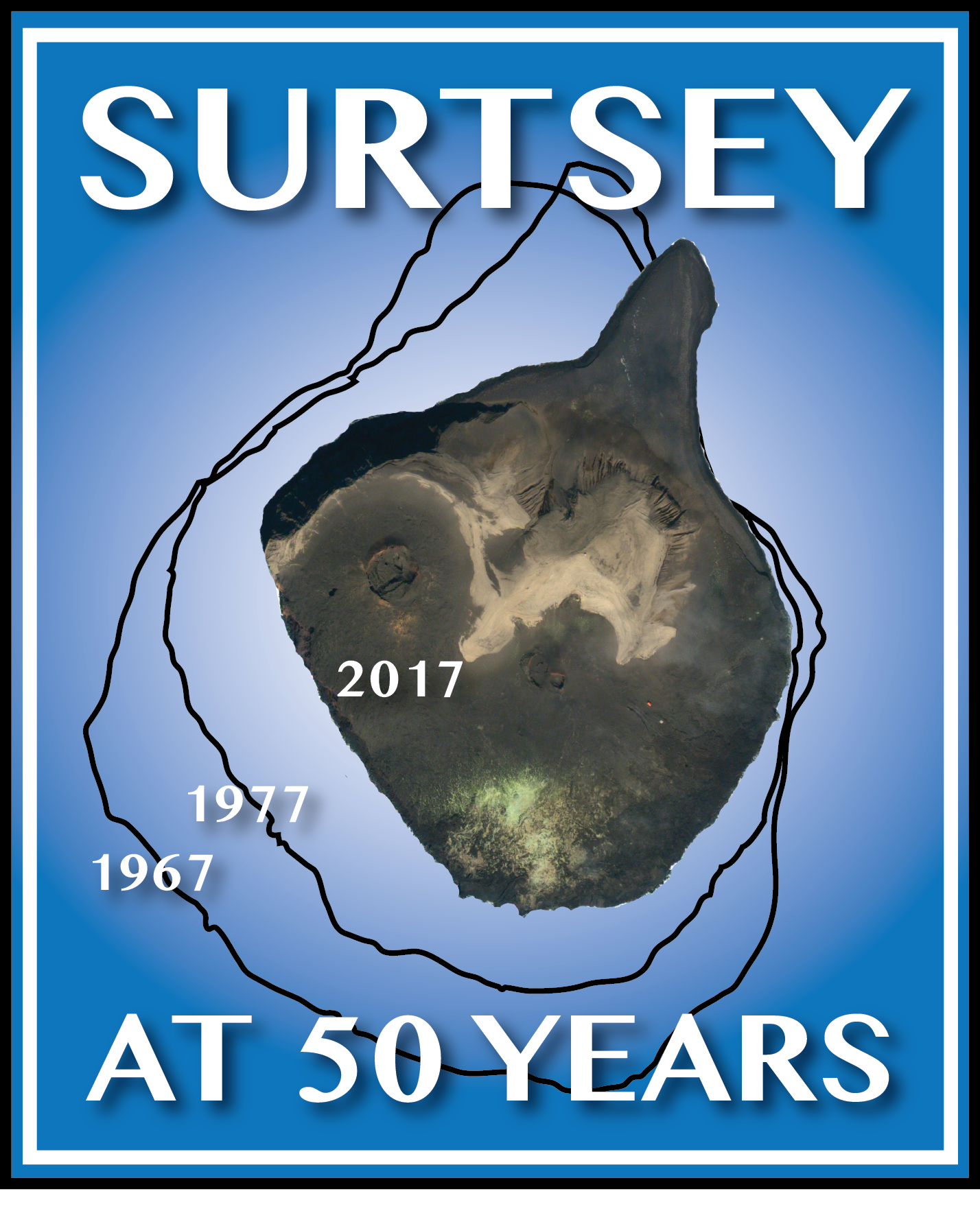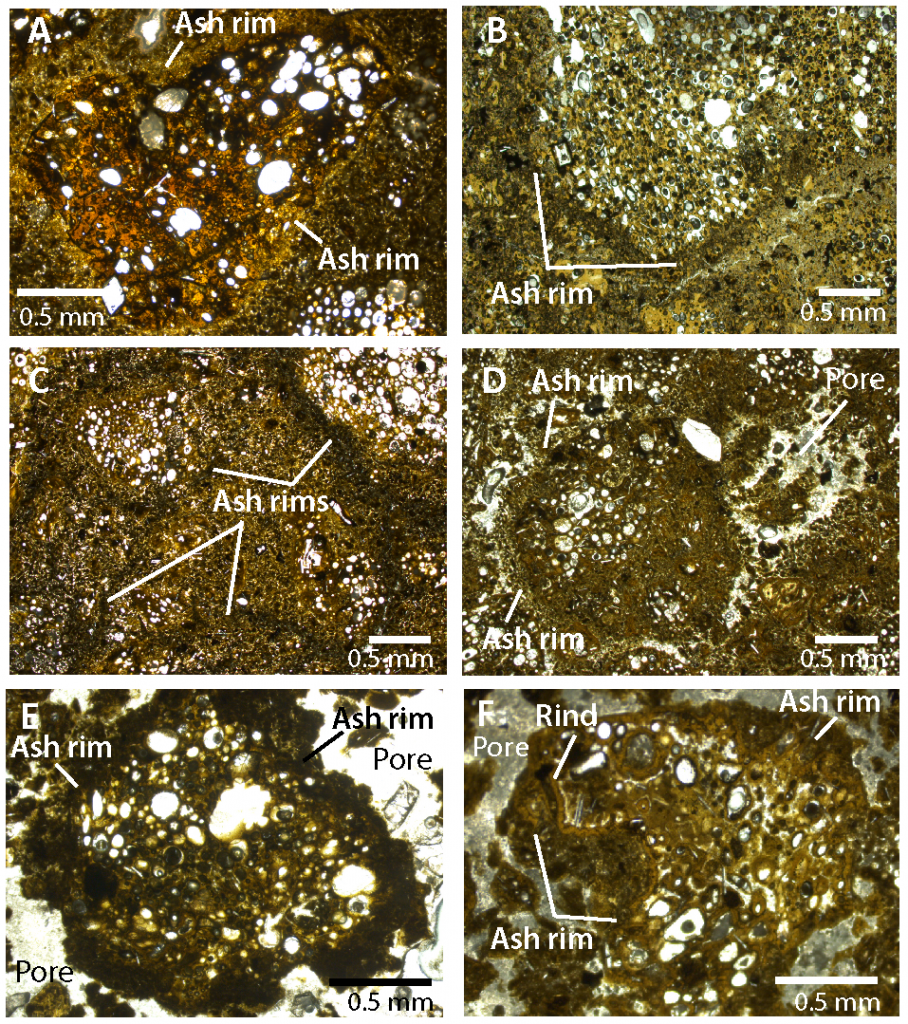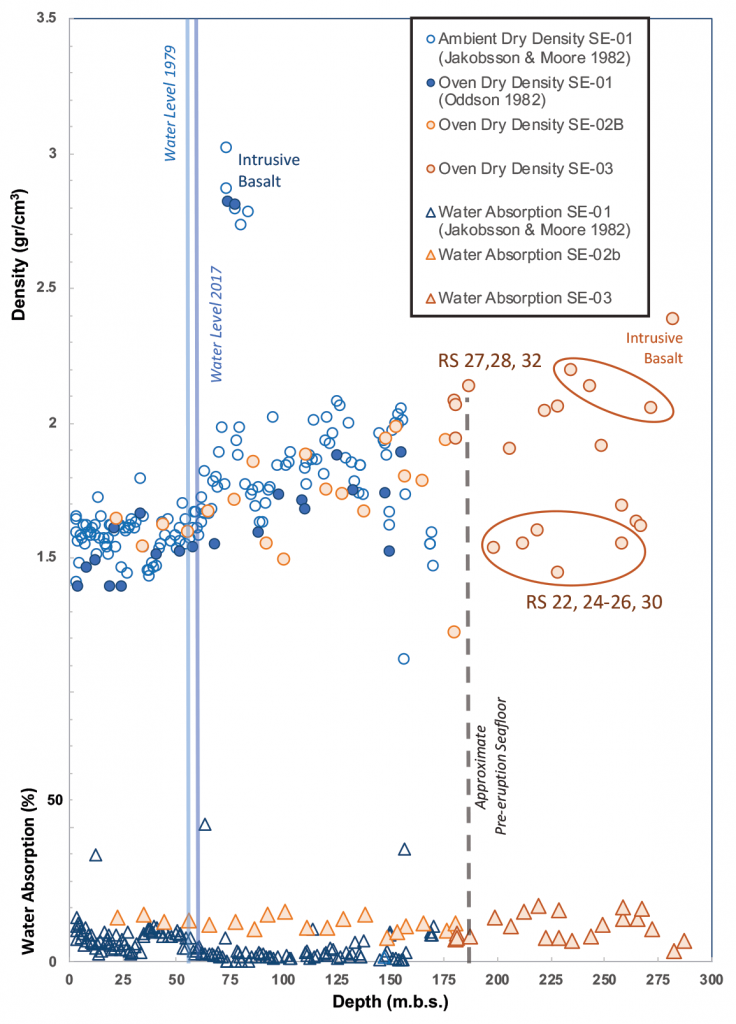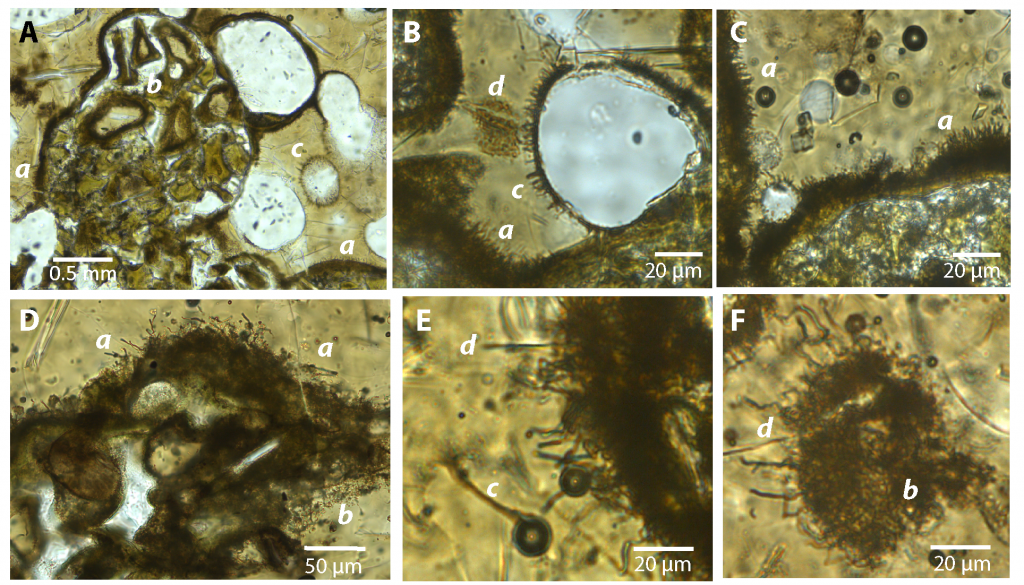Microstructural features in thin sections of the 1979 and 2017 drill cores provide new insights into eruptive, microbial and alteration processes in Surtsey lapilli tuff – including possible alteration of the basalt in the 1979 core repository.
Images of coarse ash- and lapilli-sized particles with rims of fine ash in submarine and sub-seafloor lapilli tuff occur in the submarine and sub-seafloor lapilli tuff deposits of the 2017 Surtsey drill cores, plane polarized light (ppl).These do not resemble typical lapilli armoured with fine ash, and their origins remain unclear.
Water absorption and rock density of Surtsey lapilli tuff and basaltic intrusions, based on measurements by Jakobsson & Moore (1982), Oddson (1982), and Jackson et al. (2019a). The deposits with large vesicles in the altered ash matrix and pyroclasts with narrow ash rims (RS22, 24, 25, 26, 32) have lower bulk density and water absorption than the more compact sub-seafloor tuff deposits.
Petrographic images of microtubule and granular microstructures, interfacial zones with, and possible endolithic microborings in glass lapilli in the original 1979 Surtsey thin sections (79S), ppl. A, B, C) 79S, 36.4 m.b.s., 70.8 °C in 1980. D, E, F, G) 79S, 107.5 m.b.s., 140.8 °C in 1980. These features suggest that microbial activity could have taken place in fresh glass less than 12 years after eruptions terminated.



